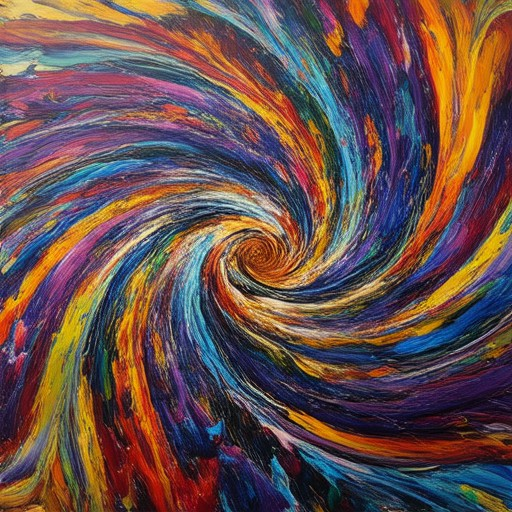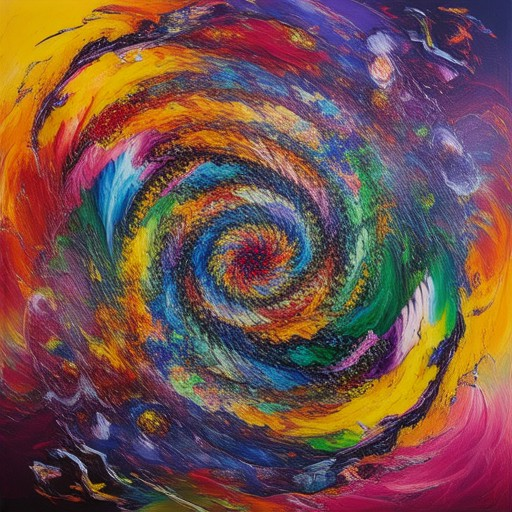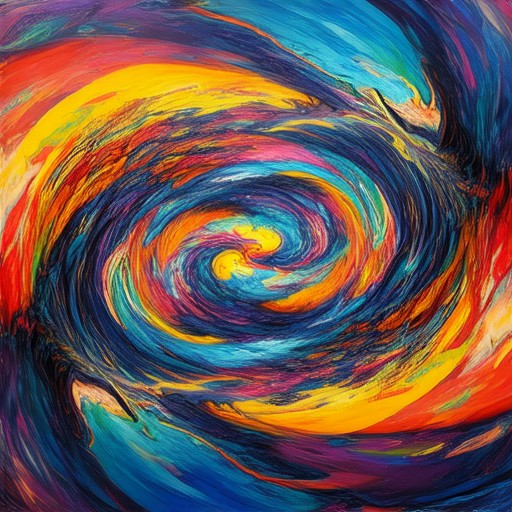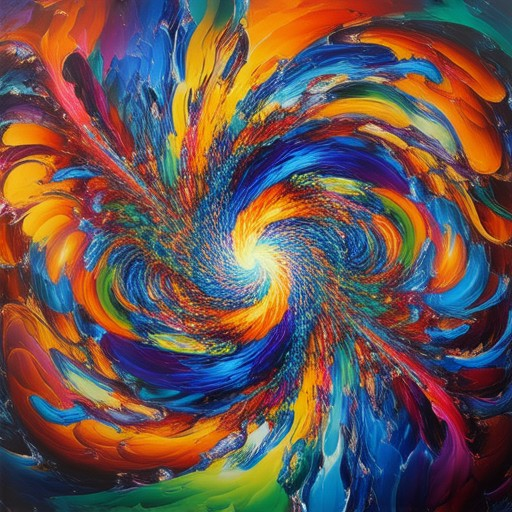Exploring the vast spectrum of artistic expression can be both inspiring and overwhelming. From the ancient techniques of traditional art forms to the innovative methods of modern and contemporary styles, the world of art offers endless possibilities. Whether you’re an aspiring artist seeking guidance or a curious observer looking to deepen your understanding, this comprehensive guide aims to walk you through the intricate details of artistic methods and styles. By examining everything from fundamental concepts to advanced techniques, this article will provide you with a well-rounded perspective on the diverse ways artists have expressed themselves across different eras and cultures. Join us as we uncover the secrets behind the 7 major art forms, delve into the complexities of artistic methods, and discover the beauty of various art styles that have shaped our cultural landscape. Prepare to be inspired and equipped with valuable insights that will enhance your appreciation for the art world.
Key Takeaways
– Five Primary Art Methods: Discover the foundational techniques of drawing, painting, sculpture, printmaking, and photography, each offering unique creative expressions.
– Diverse Art Techniques: Explore a wide range of methods including traditional painting, sculpture, drawing, digital art, photography, fine art, and crafts.
– Three Main Art Categories: Understand the primary types—traditional visual arts, applied arts, and contemporary art—to dive into the rich spectrum of artistic expression.
– Encouragement to Explore: Motivated to create? Delve into various art forms, from classical traditions to cutting-edge contemporary innovations.

What Are the 7 Major Art Forms?
The world of art is vast and diverse, encompassing various mediums and expressions that reflect human creativity and culture. Here are the 7 major art forms, each offering unique ways to explore and appreciate artistic expression:
- Visual Arts : This category includes painting, sculpture, photography, drawing, printmaking, and more. Artists like da Vinci, Monet, and Warhol have left indelible marks on this form.
- Performing Arts : Encompassing dance, theater, music, and circus arts, performing arts bring stories and emotions to life through movement and sound.
- Literary Arts : Comprising poetry, prose, drama, and storytelling, literary arts allow writers to convey ideas and evoke emotions through words.
- Culinary Arts : The art of cooking, baking, and food preparation, culinary arts have evolved into a global phenomenon with chefs like Ferran Adrià pushing boundaries.
- Applied Arts : This includes industrial design, architecture, and crafts, where functionality meets aesthetic beauty in everyday objects and structures.
- Digital Arts : From digital painting to 3D modeling and video art, digital arts leverage technology to create innovative and immersive experiences.
- Folk Arts : Traditional crafts, music, and dances passed down through generations, folk arts preserve cultural heritage and celebrate communal traditions.
Each art form offers a unique lens through which we can view and interpret the world, making art a universal language that transcends boundaries and connects people across time and space.
What is an artistic method?
An artistic method refers to the unique approach or technique an artist uses to create art. It encompasses the tools, materials, skills, and creative processes involved in producing artwork. Artists often experiment with different methods to find their personal style and express their ideas effectively.
Key Components of an Artistic Method:
- Materials :
- The substances or tools an artist uses, such as paint, clay, canvas, or digital software.
- Examples include oil paints, watercolors, sculpting materials like marble or resin, or digital tools like Adobe Photoshop.
- Techniques :
- The specific methods or processes used to create art, such as painting, sketching, sculpting, or photography.
- Techniques can vary widely, from traditional mediums like printmaking to modern methods like 3D modeling or augmented reality art.
- Styles :
- The artistic style an artist adopts, which could be realistic, abstract, impressionistic, or surreal.
- Styles often reflect personal preferences, cultural influences, or emotional expression.
- Presentation :
- How the artist presents their work, including framing, mounting, or displaying the artwork.
- Presentation can influence the impact and perception of the piece.
Examples of Artistic Methods:
- Painting : Using brushes, colors, and canvases to create visual compositions.
- Sculpture : Shaping materials like stone, metal, or foam to create three-dimensional forms.
- Digital Art : Utilizing software and technology to create digital paintings, animations, or collages.
- Photography : Capturing moments or scenes through the use of cameras and editing techniques.
Resources for Exploring Artistic Methods:
- Visit Artful Journey to discover tips, tutorials, and insights for artists of all levels. Explore articles on various art forms, techniques, and creative processes to inspire your own artistic journey.
- Learn more about different artistic methods by checking out platforms like DeviantArt or Pinterest , which showcase a wide range of artistic styles and techniques.
By experimenting with different materials, techniques, and styles, you can develop your own unique artistic method and unlock your creative potential.

The Four Main Art Styles Explained
Art encompasses a vast spectrum of creative expressions, but it often revolves around a few predominant styles. Here are the four main art styles that have significantly influenced artistic movements throughout history:
1. Impressionism
Impressionism emerged in the late 19th century, focusing on capturing the transient nature of light and its effects on color and atmosphere. Artists like Claude Monet and Pierre-Auguste Renoir emphasized the use of vibrant colors and loose brushwork to depict moments of beauty and fleeting emotions.
2. Realism
Realism, in contrast, seeks to depict subjects with a high degree of accuracy and detail, often rendering them lifelike. Painters such as John Constable and Thomas Gainsborough focused on realistic representations of everyday scenes, objects, and people, aiming to convey a sense of truthfulness and authenticity.
3. Abstract Expressionism
Abstract Expressionism is a modern art movement that emerged in the mid-20th century, emphasizing emotional expression over traditional representation. Artists like Jackson Pollock and Mark Rothko used bold colors, gestural brushwork, and often abstract forms to communicate intense feelings and ideas.
4. Cubism
Cubism, led by Georges Braque and Pablo Picasso, revolutionized art in the early 20th century by breaking down objects into geometric shapes and analyzing their three-dimensional structure. This style emphasizes perspective and the exploration of space, often distorting traditional forms to create a unique visual language.
Each of these styles has had a profound impact on artistic development, inspiring countless movements and individual works that continue to shape contemporary art. Understanding these foundational styles provides insight into the diverse ways artists express themselves and interpret the world.

What Are the Five Methods of Art?
Art encompasses a vast array of techniques and mediums, each offering unique ways to express creativity. Here are five primary methods of art, along with examples to illustrate their application:
- Drawing
Drawing is one of the most fundamental art methods, serving as the foundation for many artistic expressions. It involves creating marks on a surface, such as paper, canvas, or digital platforms, to convey ideas visually. Examples include sketching, doodling, and creating intricate designs. - Painting
Painting is another core art method, utilizing various media like oil, acrylic, watercolor, or spray paint. Artists apply these mediums on surfaces like canvas, wood, or metal to create vibrant, dynamic works of art. Styles can range from realism to abstract expressionism. - Sculpture
Sculpture involves three-dimensional creation, typically in mediums like clay, stone, metal, or resin. Artists shape and mold these materials to bring their visions to life, producing statues, installations, or sculptures that challenge traditional forms. - Printmaking
Printmaking allows artists to create multiples of their work through techniques like lithography, etching, screen printing, or relief printing. Each method produces unique textures and colors, enabling artists to explore a wide range of creative possibilities. - Photography
Photography captures moments in time through the use of cameras and digital tools. It combines technical skill with artistic composition to create still lifes, portraits, landscapes, or conceptual images, often presented in galleries or exhibitions.
These methods provide a framework for artists to experiment, innovate, and express themselves uniquely. Whether working digitally or traditionally, each technique offers endless opportunities for creative exploration and self-expression. Explore these art methods further to discover your own style and potential.
What is an artistic technique?
An artistic technique refers to a method or approach used by artists to create works of art. These techniques vary widely depending on the medium and the artist’s style. Common artistic techniques include:
- Painting: Using brushes, colors, and canvas to create images on a surface.
- Sculpture: Creating three-dimensional forms using materials like clay, stone, or metal.
- Drawing: Expressing ideas visually using pencils, pens, or digital tools.
- Digital Art: Utilizing software and technology to create artwork digitally.
- Photography: Capturing moments and scenes using cameras and editing software.
- Fine Art: Creating traditional forms like paintings, sculptures, or prints.
- Crafts: Involving hands-on creation of items like pottery, textiles, or jewelry.
Artistic techniques allow artists to communicate emotions, stories, and perspectives through their work. Whether traditional or modern, these methods empower creators to bring their visions to life.

What Are the 3 Main Types of Art?
The world of art is vast and diverse, encompassing various forms that have evolved over centuries. While there are many types of art, three primary categories stand out as the most significant and widely recognized. These categories are:
1. Traditional Visual Arts
- Painting : A timeless medium where artists use brushes, colors, and canvas to create images that capture emotion, nature, or culture. Masterpieces like da Vinci’s “Mona Lisa” and Van Gogh’s “Starry Night” fall under this category.
- Sculpture : Involves shaping materials like clay, marble, or wood to create three-dimensional figures. Examples include ancient sculptures like the Greek statue of Aphrodite and modern works by artists like Auguste Rodin.
- Architecture : The art and science of designing structures that are functional yet aesthetically pleasing. Iconic buildings like the Eiffel Tower and the Sydney Opera House showcase architectural innovation.
2. Applied Arts (Decorative Arts)
- Design : Encompasses various forms of visual expression meant for utilitarian purposes or decoration. Interior design, graphic design, and industrial design are all part of applied arts.
- Ceramics and Pottery : Crafts that involve shaping and decorating ceramic materials. Well-known pottery pieces from artists like Wedgwood and Delft are celebrated for their beauty and functionality.
- Jewelry Design : Involves creating wearable art that combines aesthetics with craftsmanship. Pieces from Cartier and Tiffany are renowned for their intricate designs and cultural significance.
3. Contemporary Art
- Mixed Media : Combines various media such as paint, sculpture, and digital elements to create unique and often thought-provoking artwork. Artists like Banksy and Jean-Michel Basquiat are known for pushing boundaries in this field.
- Street Art : An evolving form of public art that emerged in the late 20th century. Street artists like Shepard Fairey and Keith Haring have brought their work to urban environments worldwide.
- Digital Art : Utilizes technology to create art, ranging from digital paintings to animations. Digital artists leverage software tools to explore innovative techniques and styles.
Conclusion
Understanding the three main types of art provides insight into the rich tapestry of human creativity. Whether you prefer the classical works of traditional art or the cutting-edge innovations of contemporary art, there is something to inspire every viewer. Explore museums, galleries, and online platforms to discover your favorite forms of artistic expression.




0 Comments